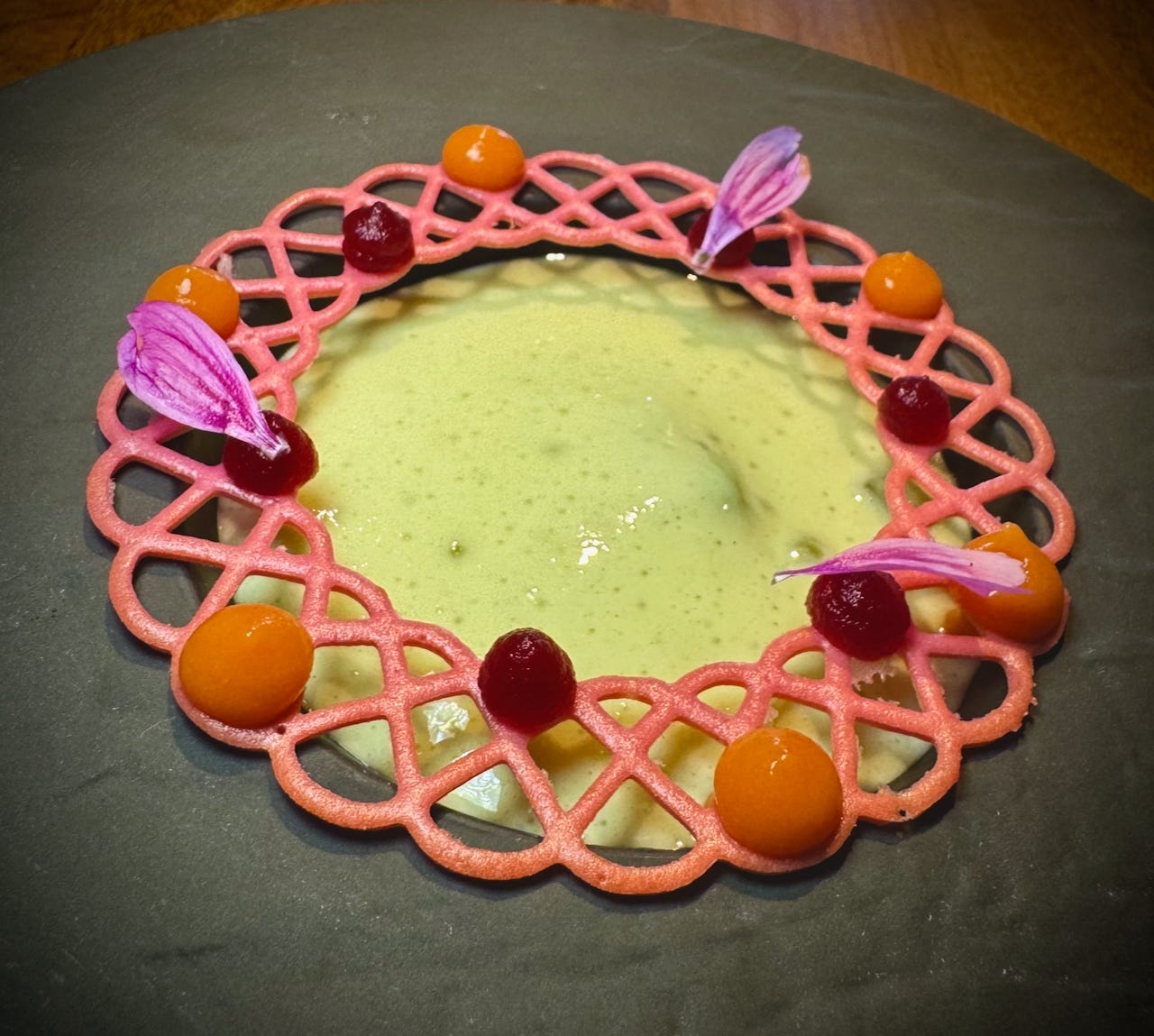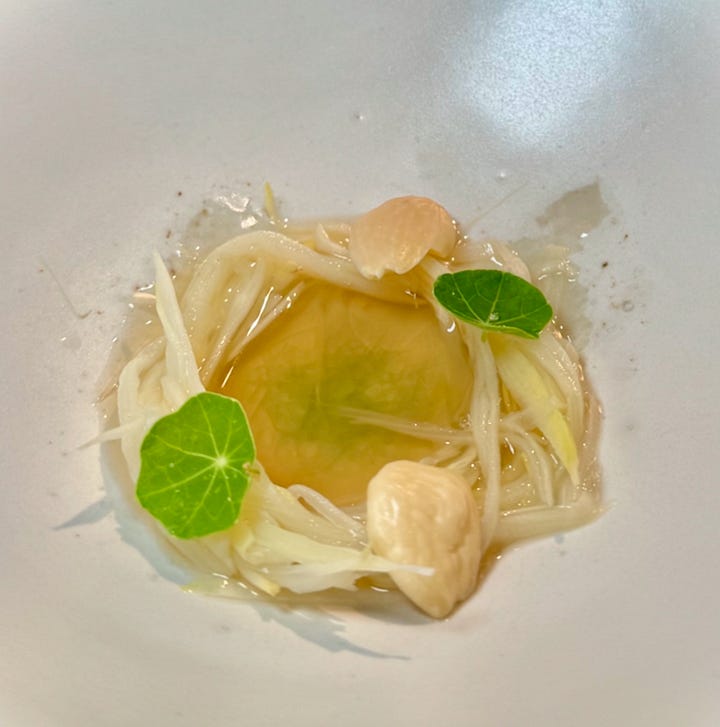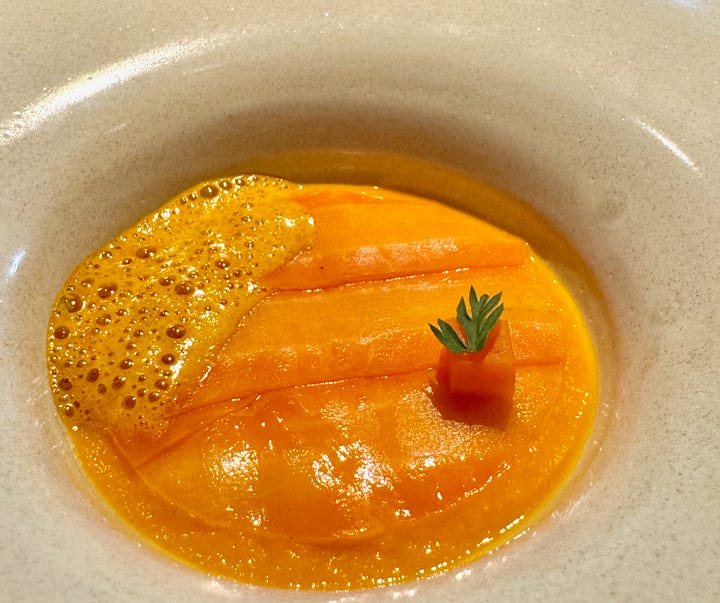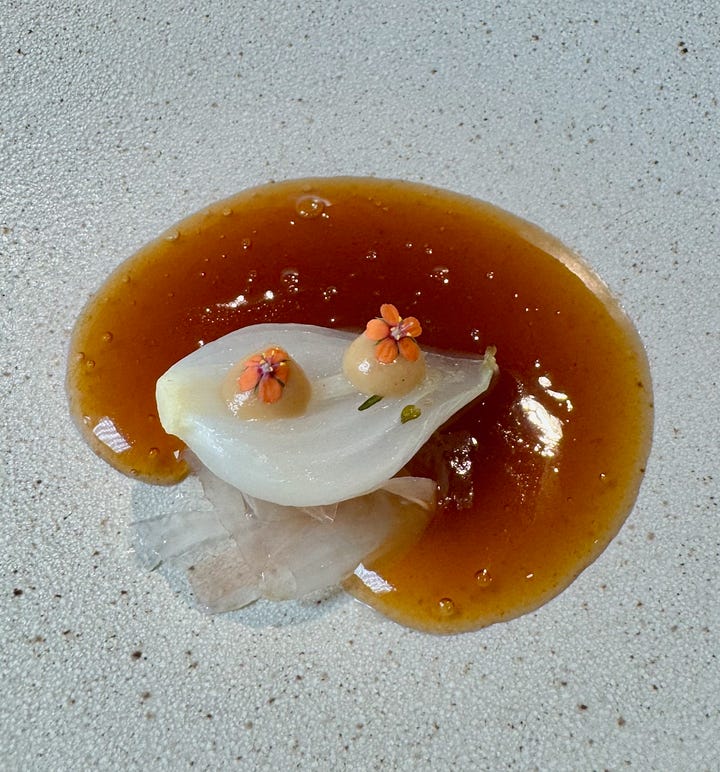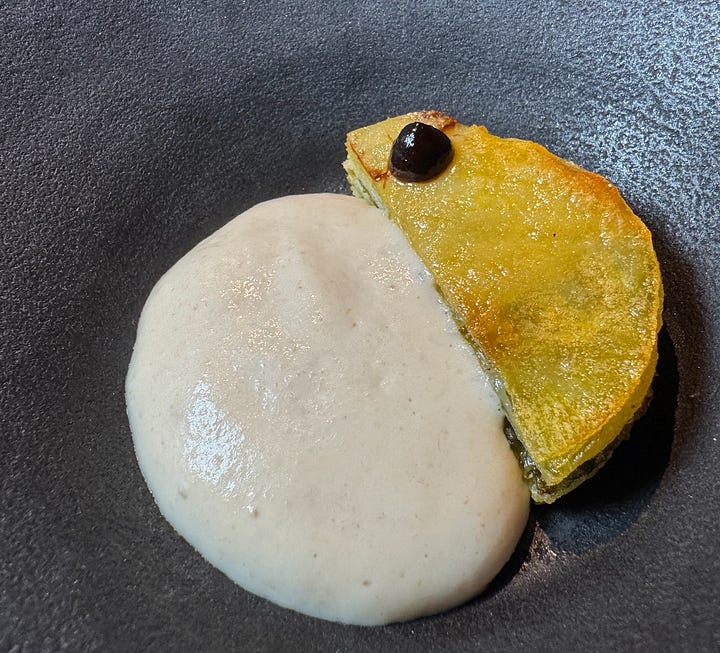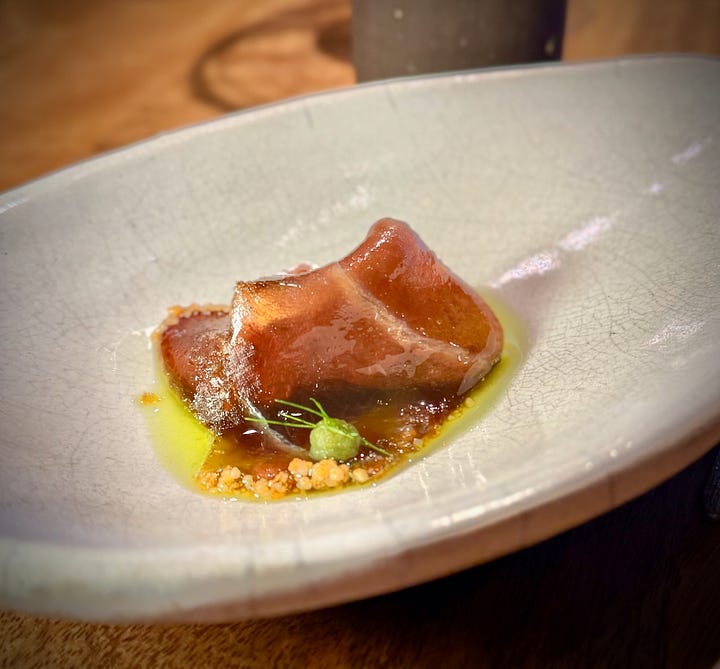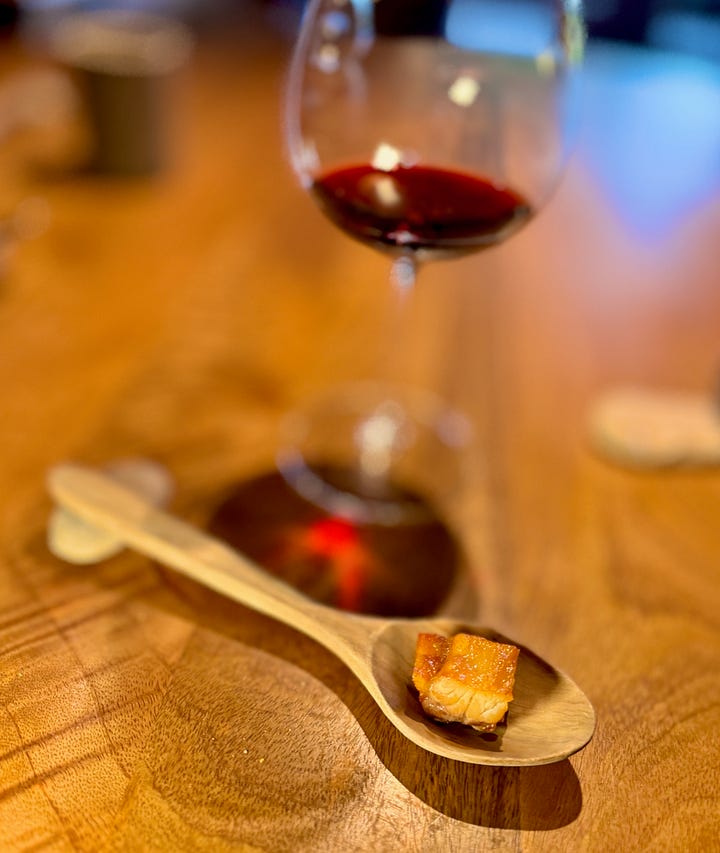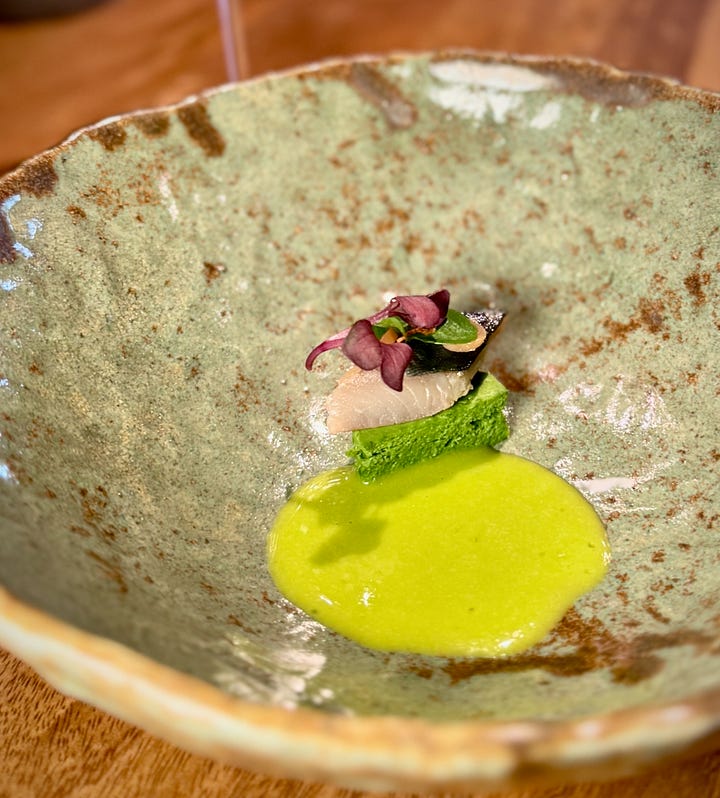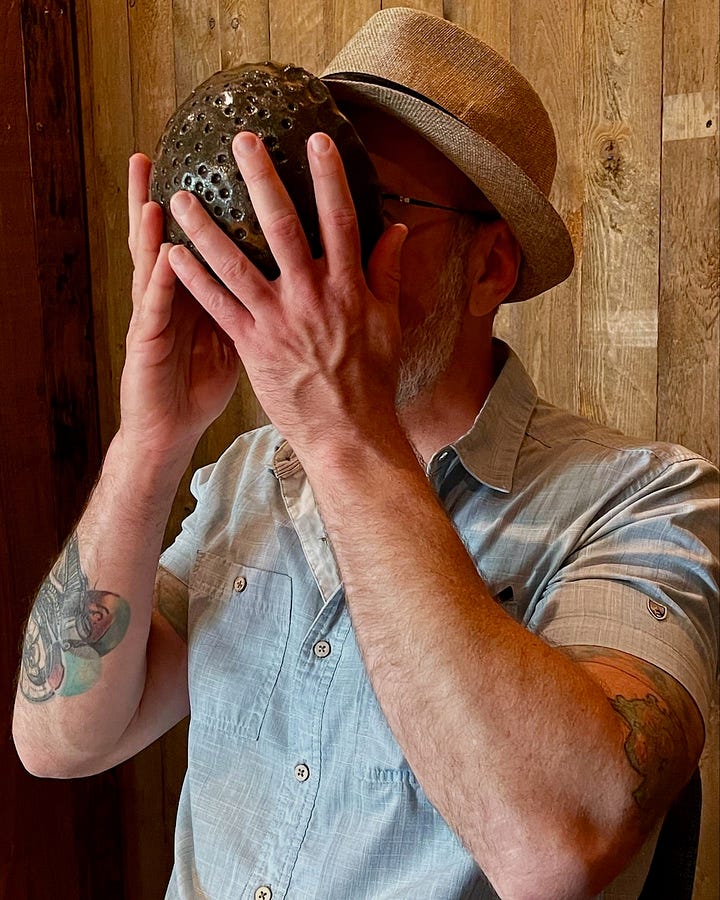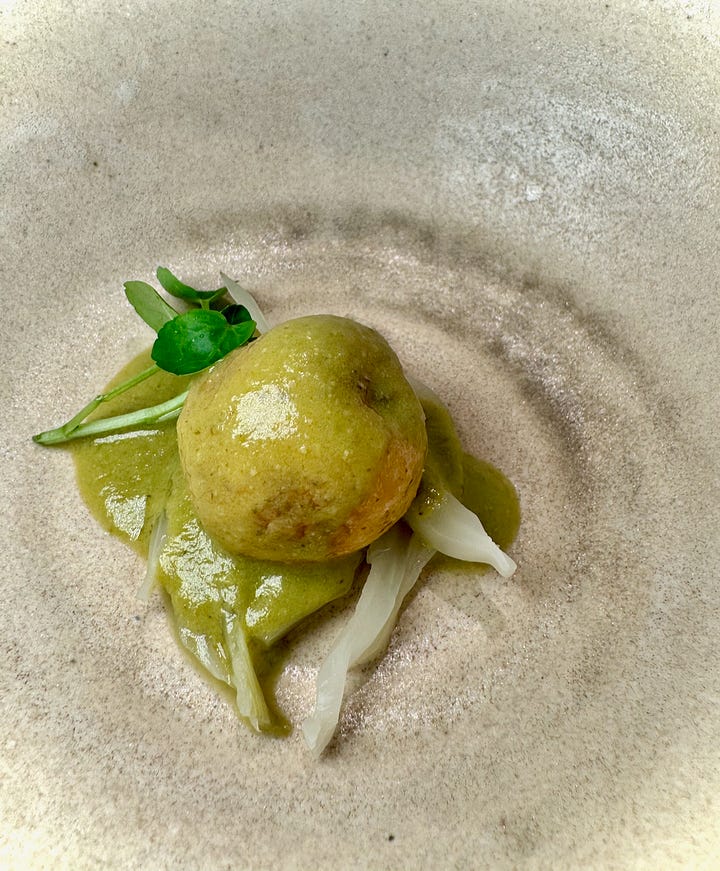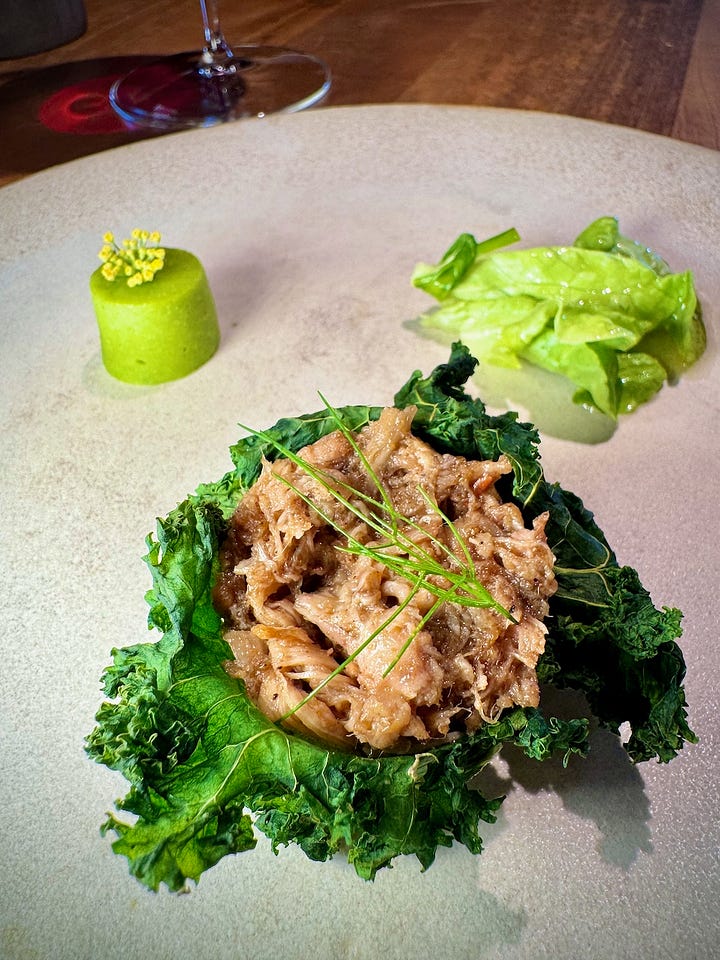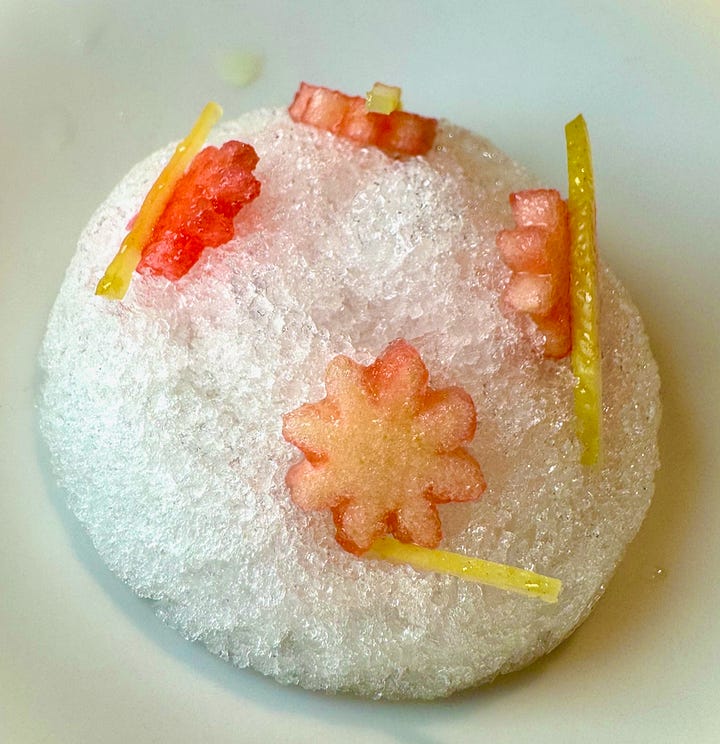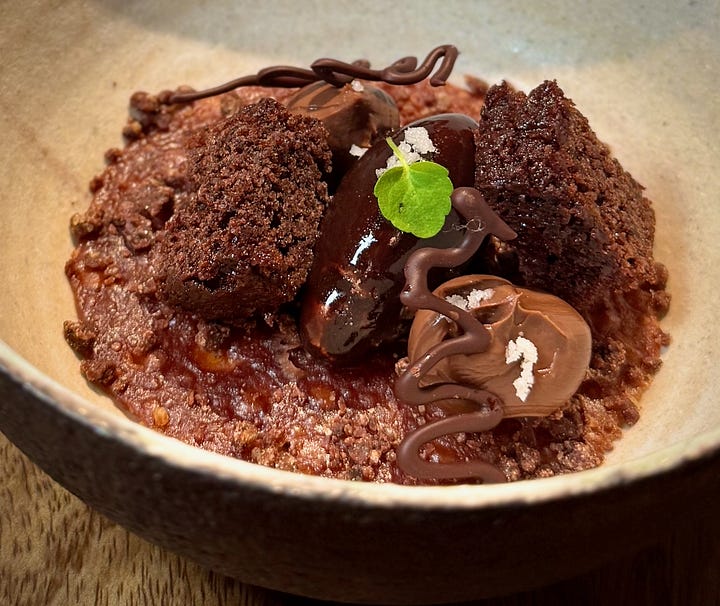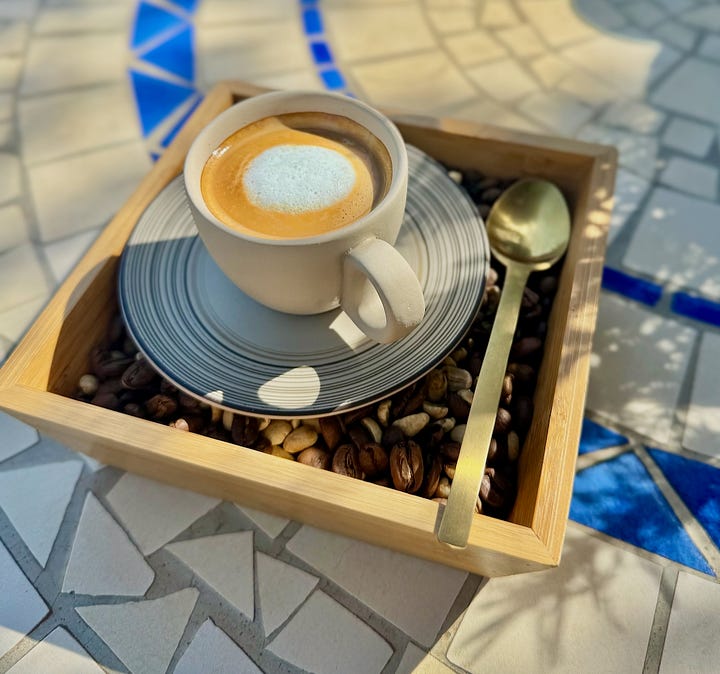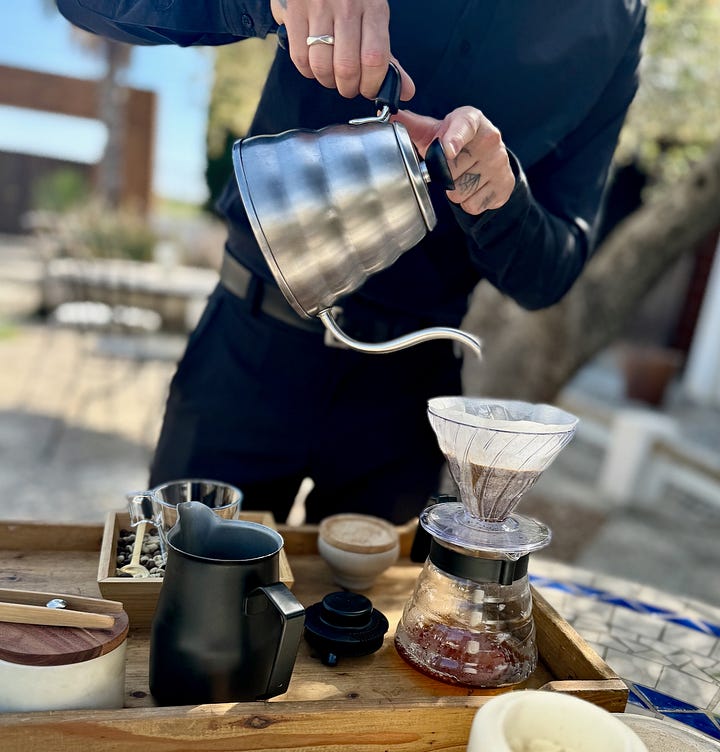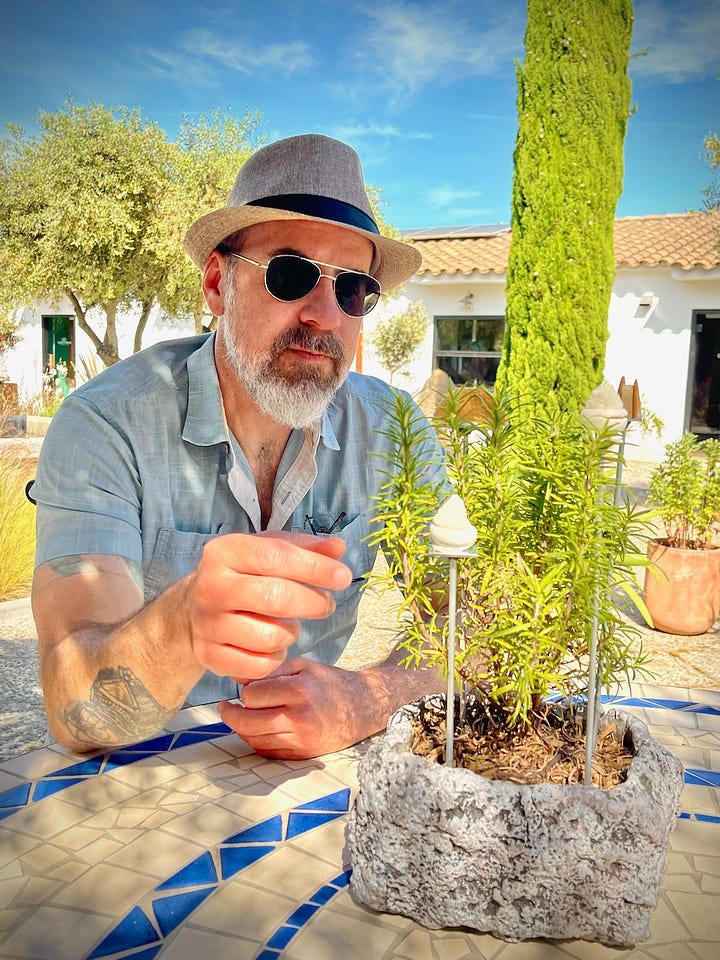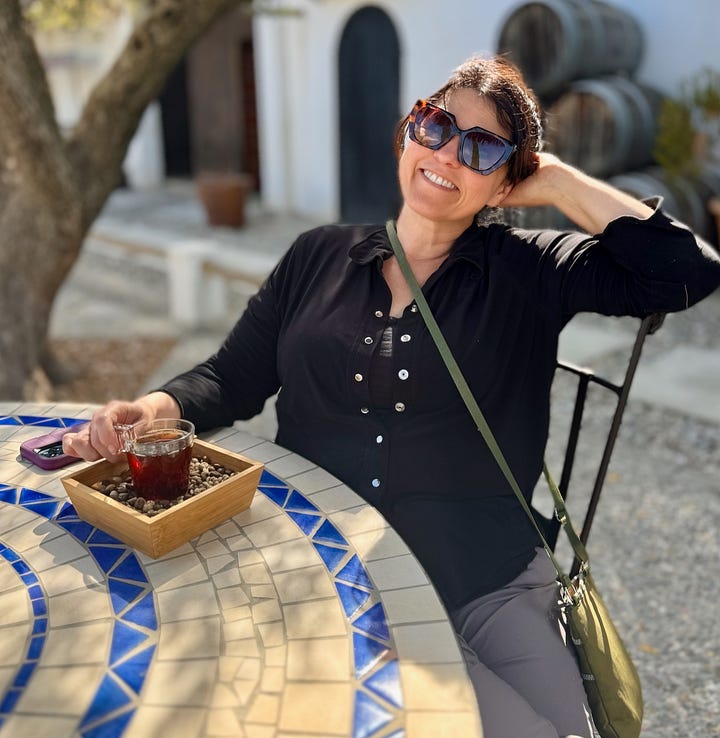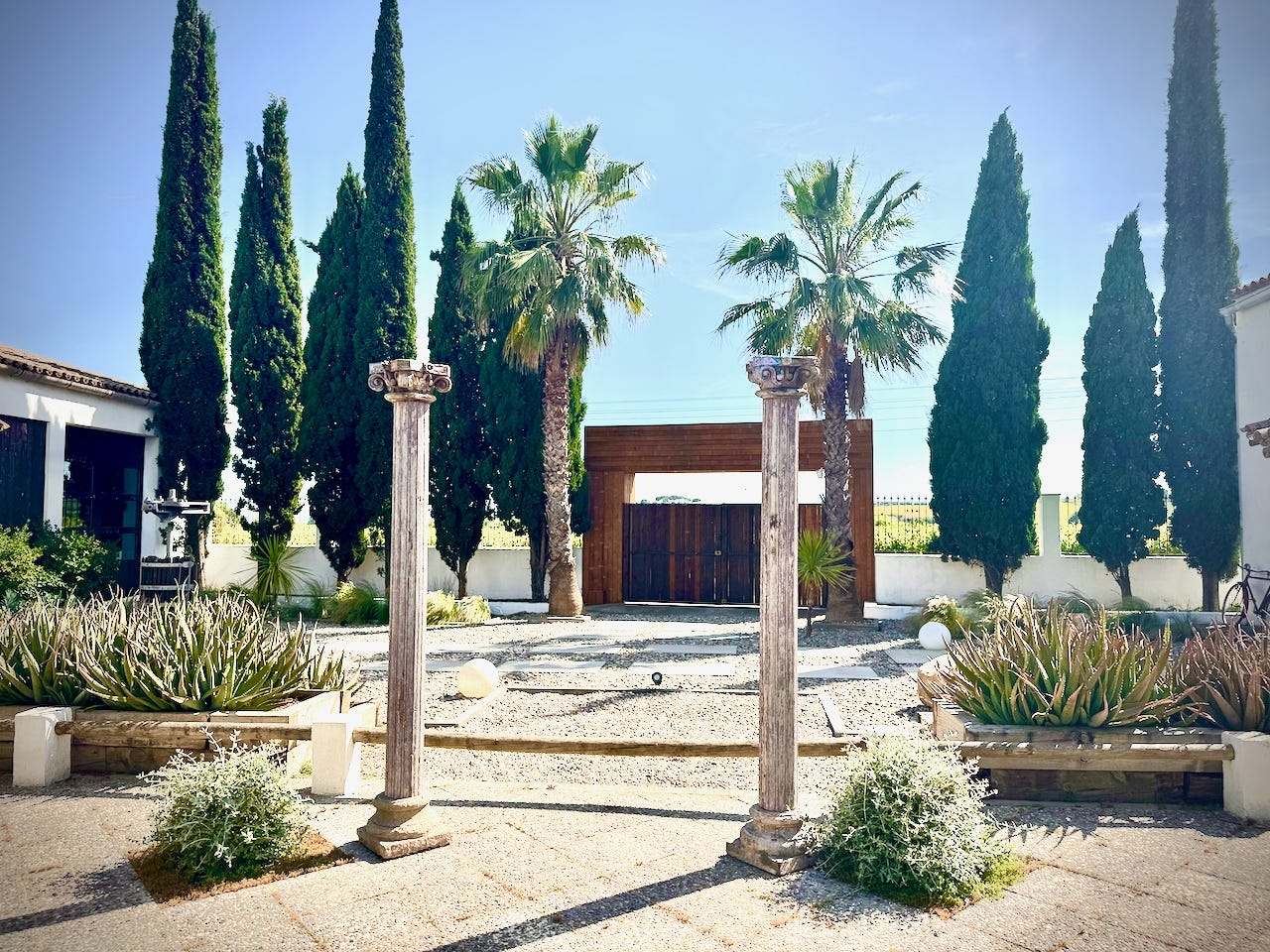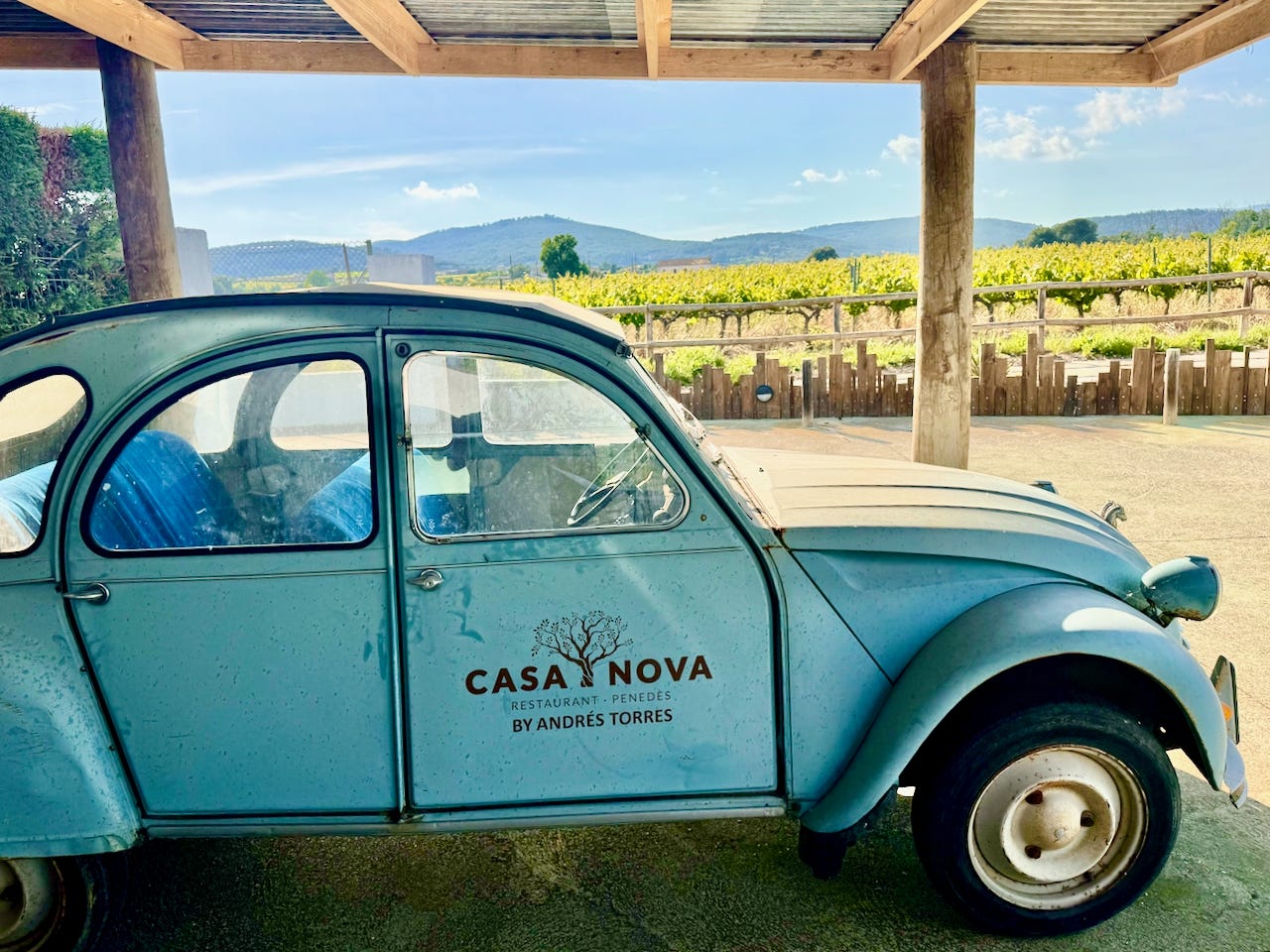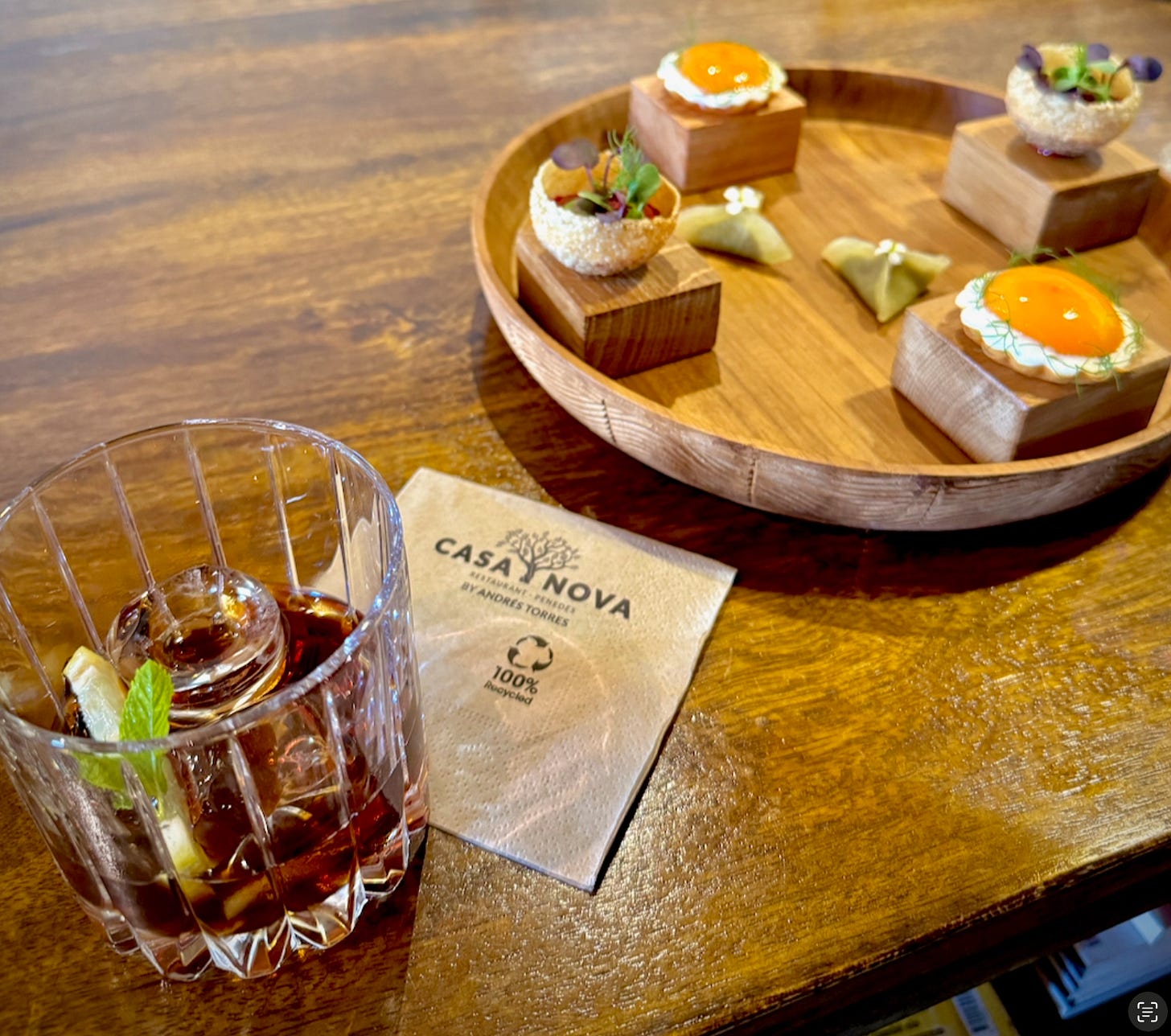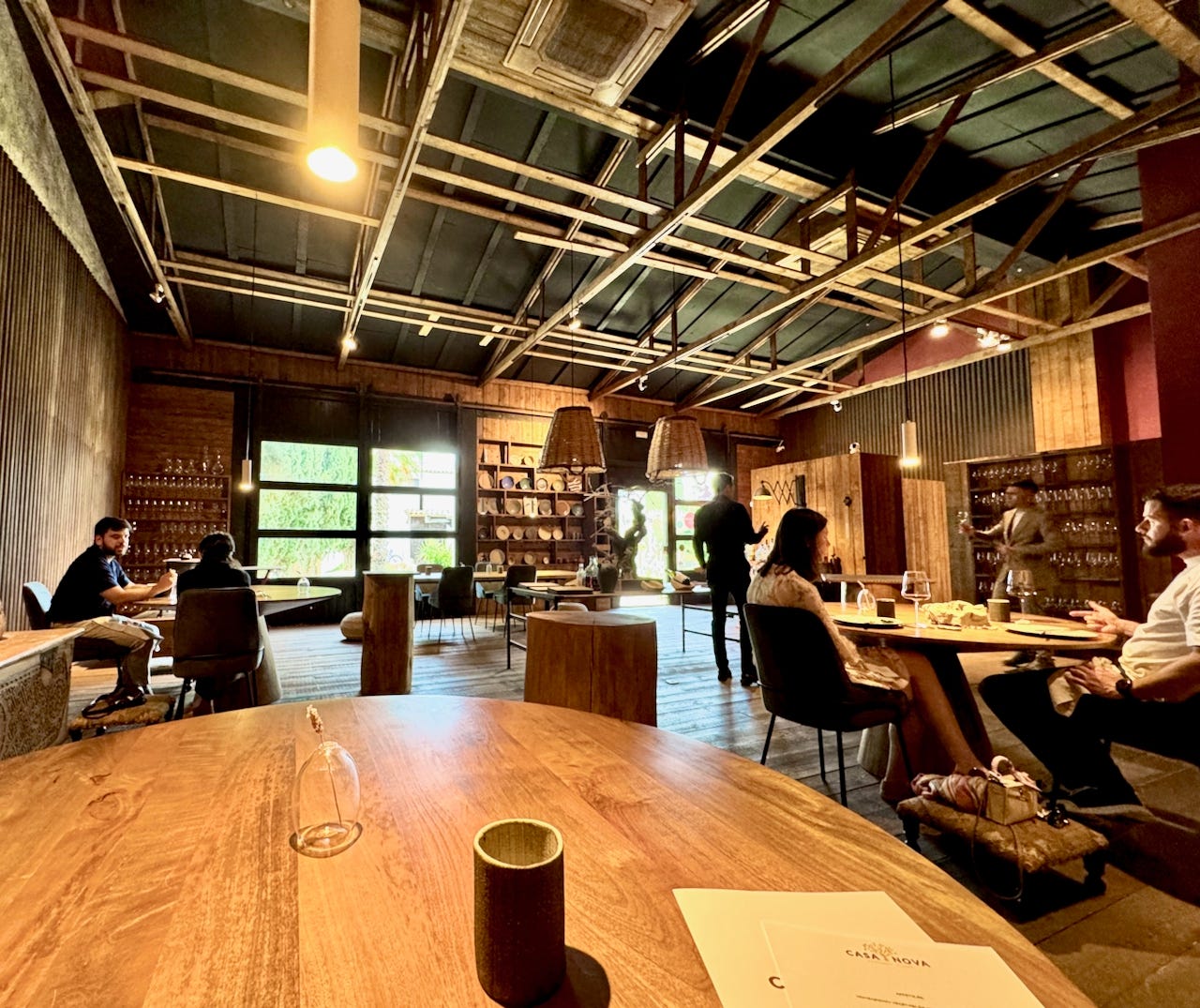Schnip's Trips: Spain, Pt. 3 🍽
The final chapter: a Michelin meal to remember at hyper-sustainable Casa Nova outside Barcelona
Lauren writing here: If Matthew ever built a restaurant, it would serve produce and herbs from its own gardens, eggs from its own chickens and ducks, honey from its own bee hives, source other ingredients locally, burn foraged firewood, run on solar energy, and prioritize composting so nothing is wasted. He did after all keep a half dozen ducks and two beehives in the past, and he charges his EV from solar panels on his home, which incorporates a mud-walled, earthship-inspired solarium/greenhouse. You get the point. Greenie eco-minded dude and all that.
While researching interesting food stops along our planned travel route in Spain, I discovered that such a restaurant actually exists in the Penedès hills, west of Barcelona. It’s called Casa Nova.
Not only that, but the restaurant is founded by a war correspondent turned humanitarian and chef, Barcelona-born Andrés Torres. He’s seen enough of the world to understand the urgent need to conserve resources and uses sustainable indigenous techniques he learned while reporting on communities around the globe. “Sustainability is all the rage in restaurants ...” he told National Geographic this past February. “But there’s a lot of bullshit out there.”
When I read that quote, I knew we HAD to go.
A lot of Michelin-starred spots follow the same “journey/passport” playbook — big on excessive pageantry and fuss, but lacking authenticity and soul. (That’s partly what we experienced last year in Porto, Portugal.) But this one-star and Green Star restaurant born from the passion and experience of a food-loving, culture-respecting environmentalist journalist looked like everything we value in a dining experience. Thankfully, it met and exceeded our high expectations.
Our late afternoon visit to Casa Nova began with a tour of the herb and veggie garden, scented by lavender and rosemary plants. Neighboring vineyards glow in the sunlight. Before Torres bought the land a couple decades ago, it hosted a chicken farm. We’re given explanations of various ingredients and techniques and are told they press their own olive oil. Coffee beans from Columbia and Indonesia and cacao beans from Guatemala are roasted on site. Bread is baked in a wood-fired oven like those used by Quechua-speaking communities in Peru, except the wood is actually vines pruned from nearby wine-producing vineyards.
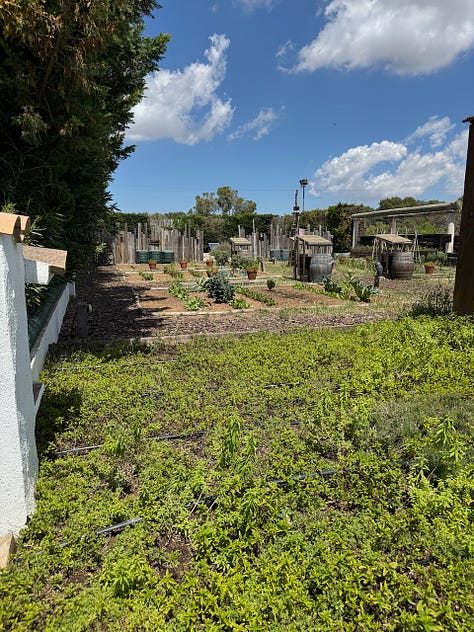
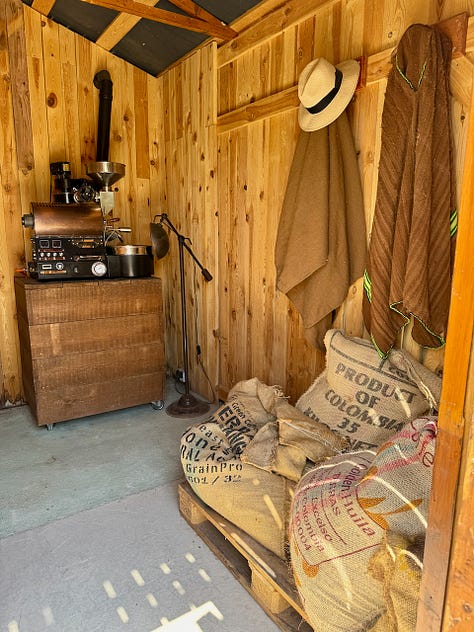
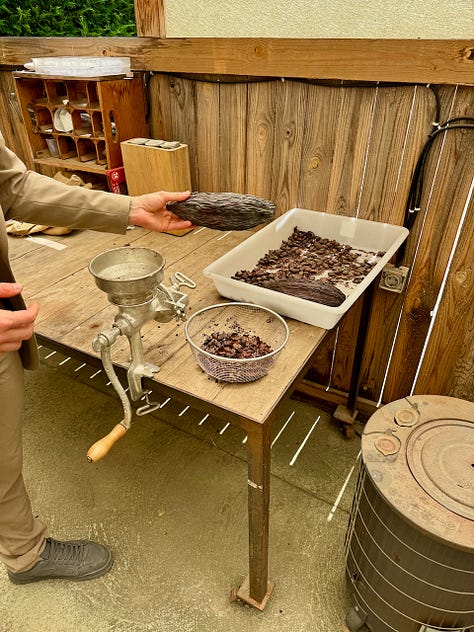
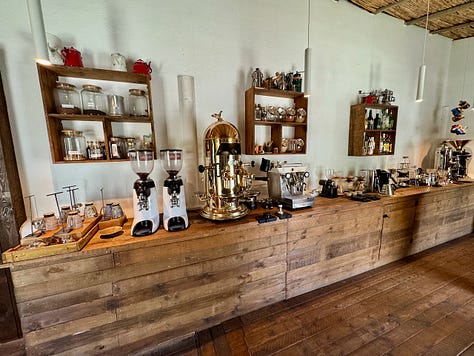
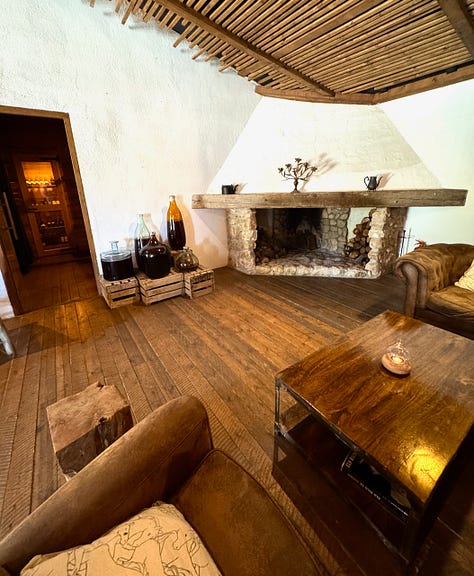
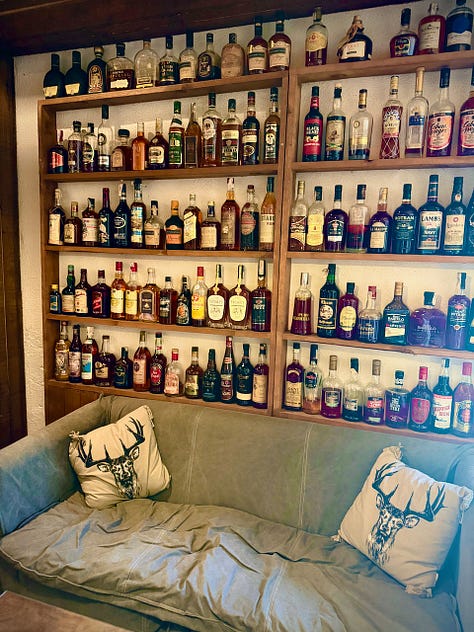
Matthew picking up the story from here: Following the tour we enter the restaurant and walk down a long hallway past a display of vintage and modern coffee equipment. We’re seated in a lounge across from a fireplace and liquor display hosting rums collected by the chef. Our server and sommelier Tomás pours us a glass of Spanish vermouth garnished with a lemon slice and mint, and gives us a quick education on the local viticulture production. He says they mostly grow white wine grapes nearby, which include Parellada, Macabeo and Xarello varietals used for making Cava. Also Spain’s Penedès wine region is known for the revival of ancient winemaking methods, like the use of ceramic aging vessels, which breathe differently than wood.
We’re served our amuse bouche course from the dozen-ish-course tasting menu (depending on how you count them), which is reasonable (for a Michelin) $95 euro at lunch with a $75 euro wine paring. (I had to drive and am increasingly a lightweight, so we shared a single pairing.) There’s an egg yolk infused with chicken broth (meaning they cross the road into your mouth at the same time — dad joke!); an Indian yogurt and beet purée presented in a crispy papadum-like cup; and a triangular daikon purse filled with a miso-celeriac mix.
Tomás tells us “we focus on quality over quantity,” by way of explaining how they only seat eight diners at a time at lunch. This day, the culinary team outnumbers us. We know this, because they walk us through the kitchen to arrive in the expansive, wood-dominant dining room, rustic and simply appointed. Water is poured from large clay, house-made jugs. Glass- and stemware are elegant. The cutlery is stylish as hell.
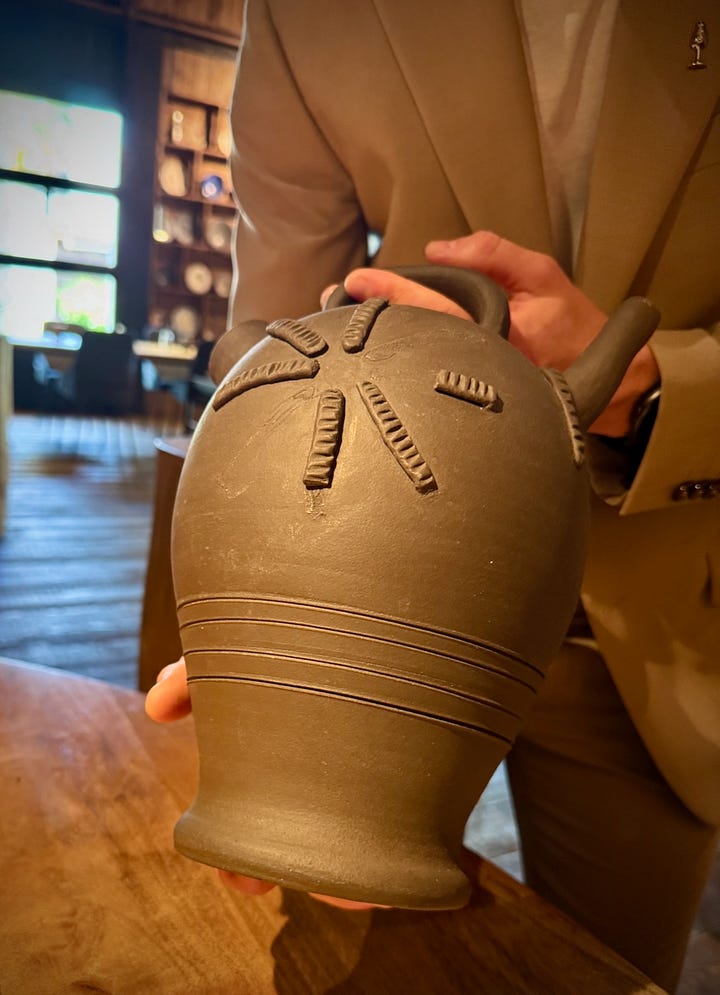
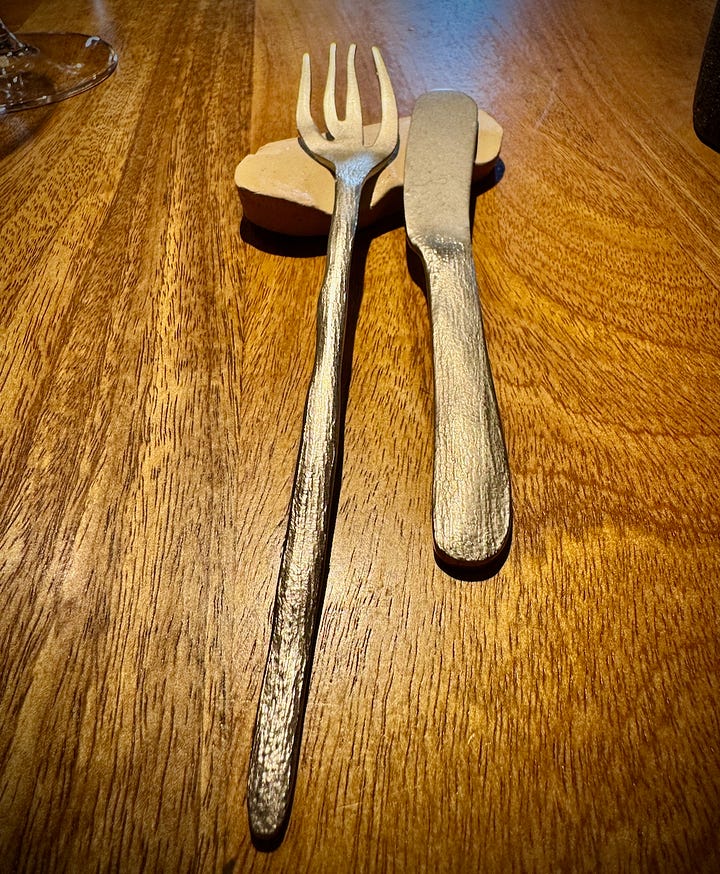
I don’t want to risk boring you with overly-long dish descriptions for the many courses ahead, so similar to the past couple weeks, I’ll let the photos do much of the talking, and use the caption lines for details. Transparently, the menu had a lot of one and two-word descriptions and I also took less than my usual detailed notes as I wanted to be present in the moment and savor the experience to the best of my ability. (Monkey-minded type-A guy here.) But here’s what I’ve got:
